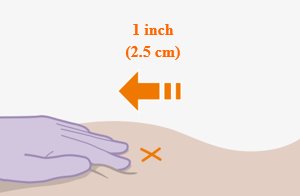Rilpivirine
Generic name: rilpivirine
Brand name: Edurant
Dosage form: oral tablet (25 mg)
Drug class: NNRTIs
Medically reviewed by A Ras MD.
What is rilpivirine used for?
Rilpivirine is a prescription medicine that is used to treat HIV infection.
Description
CABENUVA contains cabotegravir extended-release injectable suspension, an HIV INSTI, co-packaged with rilpivirine extended-release injectable suspension, an HIV NNRTI.
Cabotegravir
The chemical name for cabotegravir is (3S,11aR)-N-[(2,4-difluorophenyl)methyl]-6-hydroxy-3-methyl-5,7-dioxo-2,3,5,7,11,11a-hexahydro[1,3]oxazolo[3,2-a]pyrido[1,2-d]pyrazine-8-carboxamide. The empirical formula is C19H17F2N3O5 and the molecular weight is 405.35 g/mol. It has the following structural formula:

Cabotegravir extended-release injectable suspension is a white to light pink free-flowing suspension for intramuscular injection. Each sterile single-dose vial contains 2 mL or 3 mL of the following: cabotegravir 200 mg/mL and the following inactive ingredients: mannitol (35 mg/mL), polyethylene glycol (PEG) 3350 (20 mg/mL), polysorbate 20 (20 mg/mL), and Water for Injection.
Rilpivirine
The chemical name for rilpivirine is 4-[[4-[[4-[(E)-2-cyanoethenyl]-2,6-dimethylphenyl]amino]-2-pyrimidinyl]amino]benzonitrile. Its molecular formula is C22H18N6 and its molecular weight is 366.42. Rilpivirine has the following structural formula:

Rilpivirine extended-release injectable suspension is a white to off-white suspension for intramuscular injection. Each sterile single-dose vial contains 2 mL or 3 mL of the following: rilpivirine 300 mg/mL and the following inactive ingredients: citric acid monohydrate (1 mg/mL), poloxamer 338 (50 mg/mL), Water for Injection, glucose monohydrate to ensure isotonicity, sodium dihydrogen phosphate monohydrate, and sodium hydroxide to adjust pH.
The vial stoppers are not made with natural rubber latex.
Mechanism of Action
CABENUVA contains 2 long-acting HIV-1 antiretroviral drugs, cabotegravir and rilpivirine [see Microbiology
Before taking rilpivirine, tell your doctor:
For all patients taking rilpivirine:
- If you are allergic to rilpivirine; any part of this medicine; or any other drugs, foods, or substances. Tell your doctor about the allergy and what signs you had.
- If you are taking any of these drugs: Carbamazepine, delavirdine, dexamethasone, dexlansoprazole, efavirenz, esomeprazole, etravirine, lansoprazole, nevirapine, omeprazole, oxcarbazepine, pantoprazole, phenobarbital, phenytoin, rabeprazole, rifampin, rifapentine, or St. John’s wort.
- If you are breast-feeding. Do not breast-feed while you take rilpivirine.
Children:
- If your child is younger than 12 years of age. Do not give rilpivirine to a child younger than 12 years of age.
- If your child weighs less than 77 pounds (35 kilograms).
This is not a list of all drugs or health problems that interact with rilpivirine.
Tell your doctor and pharmacist about all of your drugs (prescription or OTC, natural products, vitamins) and health problems. You must check to make sure that it is safe for you to take rilpivirine with all of your drugs and health problems. Do not start, stop, or change the dose of any drug without checking with your doctor.
What are some things I need to know or do while I take rilpivirine?
- Tell all of your health care providers that you take rilpivirine. This includes your doctors, nurses, pharmacists, and dentists.
- High cholesterol has happened with rilpivirine. If you have questions, talk with the doctor.
- Have blood work checked as you have been told by the doctor. Talk with the doctor.
- This medicine is not a cure for HIV. Stay under the care of your doctor.
- This medicine does not stop the spread of diseases like HIV or hepatitis that are passed through blood or having sex. Do not have any kind of sex without using a latex or polyurethane condom. Do not share needles or other things like toothbrushes or razors.
- Do not take more than what your doctor told you to take. Taking more than you are told may raise your chance of very bad side effects.
- Certain drugs or herbal products could cause rilpivirine to not work as well. Be sure your doctor and pharmacist know about all of your drugs.
- Tell your doctor if you are pregnant or plan on getting pregnant. You will need to talk about the benefits and risks of using rilpivirine while you are pregnant.
How is rilpivirine best taken?
Use rilpivirine as ordered by your doctor. Read all information given to you. Follow all instructions closely.
- Take rilpivirine at the same time of day.
- Take with a meal.
- Do not use a protein drink in place of a meal.
- Keep taking rilpivirine as you have been told by your doctor or other health care provider, even if you feel well.
- It is important that you do not miss or skip a dose of rilpivirine during treatment.
- Do not take antacids within 2 hours before rilpivirine or 4 hours after rilpivirine.
- Some other drugs may need to be taken at some other time than rilpivirine. If you take other drugs, check with your doctor or pharmacist to see if you need to take them at some other time than rilpivirine.
What do I do if I miss a dose?
- Take a missed dose as soon as you think about it, with a meal.
- If it has been 12 hours or more since the missed dose, skip the missed dose and go back to your normal time.
- Do not take 2 doses at the same time or extra doses.
- If you are not sure what to do if you miss a dose, call your doctor.
What are the side effects of rilpivirine that I need to call my doctor about immediately?
WARNING/CAUTION: Even though it may be rare, some people may have very bad and sometimes deadly side effects when taking a drug. Tell your doctor or get medical help right away if you have any of the following signs or symptoms that may be related to a very bad side effect:
- Signs of an allergic reaction, like rash; hives; itching; red, swollen, blistered, or peeling skin with or without fever; wheezing; tightness in the chest or throat; trouble breathing, swallowing, or talking; unusual hoarseness; or swelling of the mouth, face, lips, tongue, or throat.
- New or worse behavior or mood changes like depression or thoughts of killing yourself.
- A heartbeat that does not feel normal.
- Change in body fat.
- Changes in your immune system can happen when you start taking drugs to treat HIV. If you have an infection that you did not know you had, it may show up when you take rilpivirine. Tell your doctor right away if you have any new signs after you start rilpivirine, even after taking it for several months. This includes signs of infection like fever, sore throat, weakness, cough, or shortness of breath.
- Very bad skin and allergic reactions have happened with rilpivirine. Skin reactions have happened along with fever or problems in body organs like the liver. Call your doctor right away if you have red, swollen, blistered, or peeling skin (with or without fever); red or irritated eyes; sores in your mouth, throat, nose, or eyes; trouble swallowing; or signs of liver problems like dark urine, feeling tired, not hungry, upset stomach or stomach pain, light-colored stools, throwing up, or yellow skin or eyes.
What are some other side effects of rilpivirine?
All drugs may cause side effects. However, many people have no side effects or only have minor side effects. Call your doctor or get medical help if any of these side effects or any other side effects bother you or do not go away:
- Headache.
- Trouble sleeping.
- Feeling sleepy.
- Upset stomach or throwing up.
- Dizziness.
- Stomach pain.
These are not all of the side effects that may occur. If you have questions about side effects, call your doctor. Call your doctor for medical advice about side effects.
You may report side effects to the FDA at 1-800-332-1088. You may also report side effects at https://www.fda.gov/medwatch.
If overdose is suspected:
If you think there has been an overdose, call your poison control center or get medical care right away. Be ready to tell or show what was taken, how much, and when it happened.
How do I store and/or throw out rilpivirine?
- Store in the original container at room temperature.
- Protect from light.
- Store in a dry place. Do not store in a bathroom.
- Keep all drugs in a safe place. Keep all drugs out of the reach of children and pets.
- Throw away unused or expired drugs. Do not flush down a toilet or pour down a drain unless you are told to do so. Check with your pharmacist if you have questions about the best way to throw out drugs. There may be drug take-back programs in your area.
Label
PRINCIPAL DISPLAY PANEL
- NDC 49702-253-15
- CABENUVA
- Cabotegravir extended-release
- injectable suspension
- 400 mg/2 mL
- (200 mg/mL)
- co-packaged with
- Rilpivirine extended-release
- injectable suspension
- 600 mg/2 mL
- (300 mg/mL)
- Rx Only
- For gluteal intramuscular use only.
- Healthcare Professional administration only.
- Contents:

PRINCIPAL DISPLAY PANEL
- NDC 49702-240-15
- CABENUVA
- Cabotegravir extended-release
- injectable suspension
- 600 mg/3 mL
- (200 mg/mL)
- co-packaged with
- Rilpivirine extended-release
- injectable suspension
- 900 mg/3 mL
- (300 mg/mL)
- Rx Only
- For gluteal intramuscular use only.
- Healthcare Professional administration only.
- Contents:
SRC: NLM .
